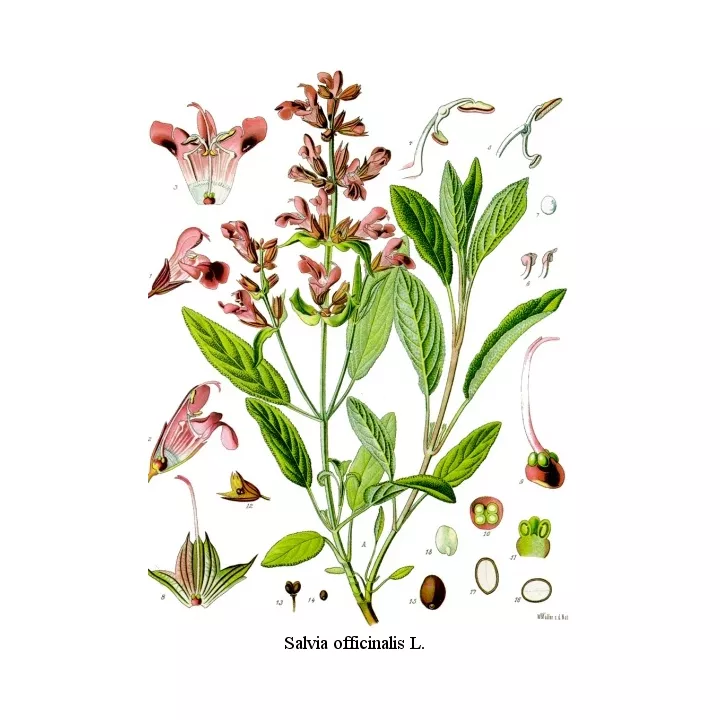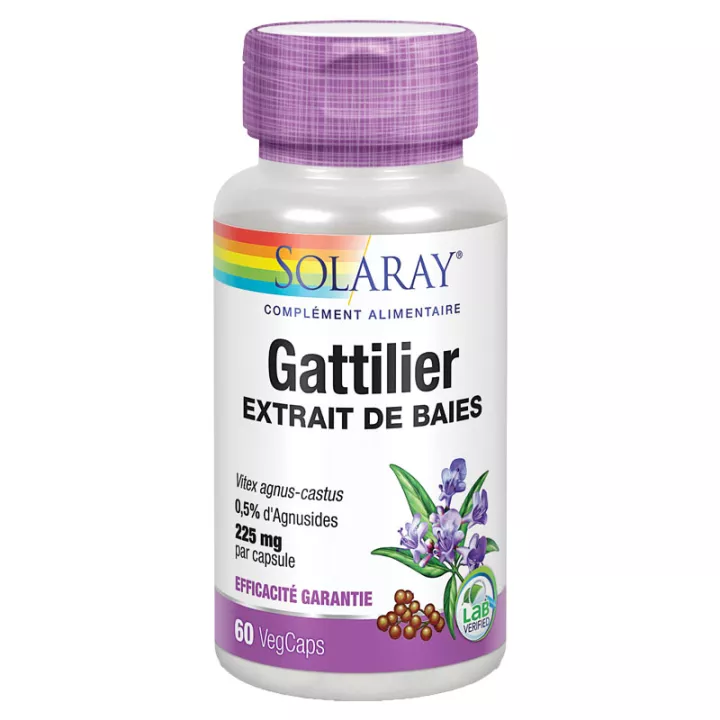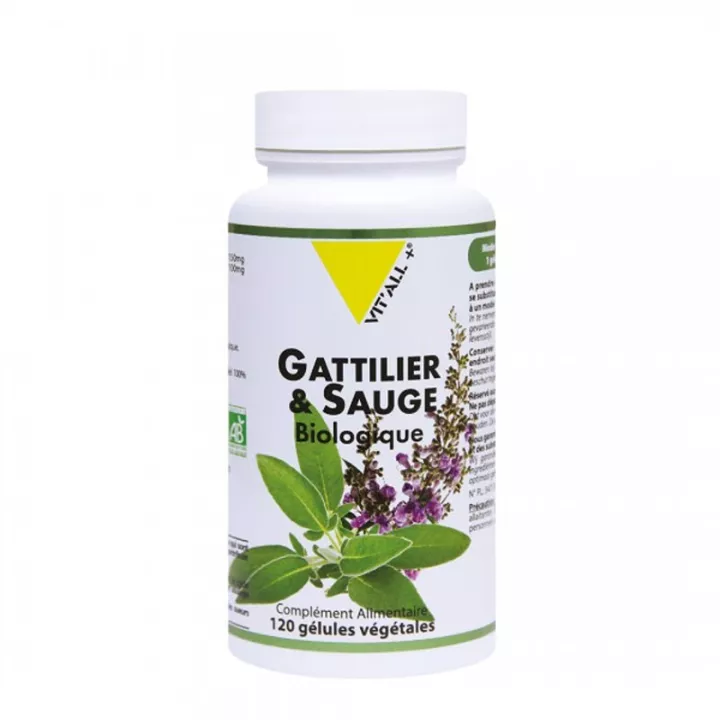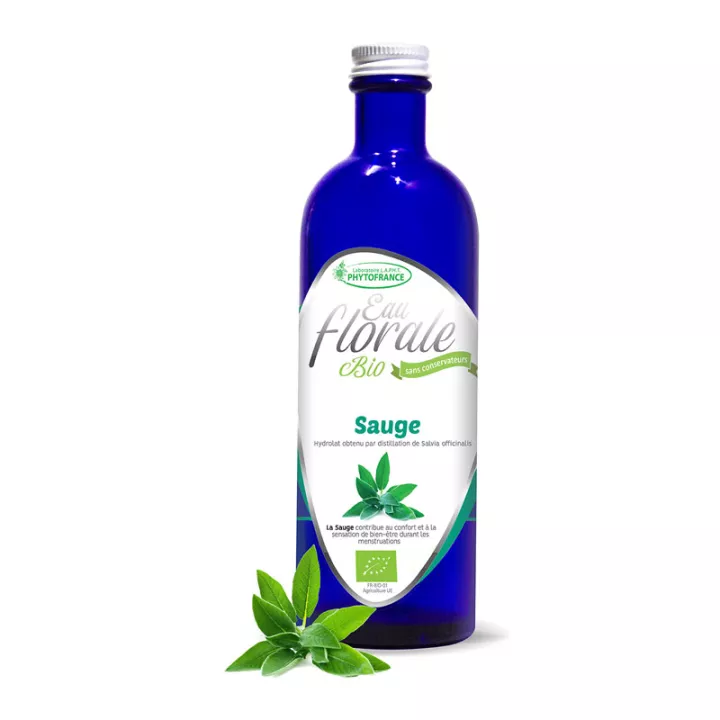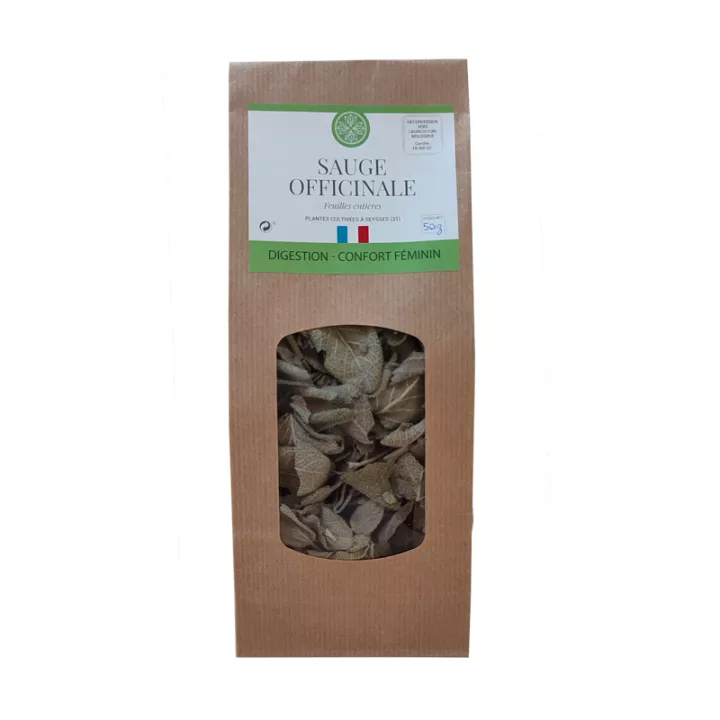What is Officinal Sage used for?
Officinal sage, native to Mediterranean regions, is used in both cooking and medicine. Its Latin name, Salvia, means "she who saves", a reference to its many benefits. In addition to common sage, other species such as clary sage and Spanish sage are also used, although they contain fewer thujones, a potentially toxic substance.
Sage's main indications include soothing digestive disorders such as bloating and flatulence, and regulating perspiration, particularly during menopause. Its anti-inflammatory and antiseptic properties also make it effective against inflammation of the mucous membranes, offering support in the event of viral infections.
Sage officinale is recognized for its role in convalescence, relieving menstrual pain, stimulating bile production and even improving memory. Applied locally, it is used to disinfect small wounds. Sage decoction gargles are often recommended to combat dental plaque.
Sage officinale is a plant rich in active compounds. Its leaves contain flavonoids, diterpenes, triterpenes and phenolic acids, contributing to its anti-inflammatory, antiseptic and antioxidant properties. This composition enables it to effectively treat a number of disorders.
Its beneficial action on stomach aches and difficult digestion is largely due to its flavonoids and essences. The phenolic acids present in sage are responsible for its anti-inflammatory action, essential for soothing irritated mucous membranes. Studies have also shown that sage can improve memory and help manage anxiety.
In terms of women's health, sage is particularly useful for relieving menopausal symptoms. Its phytoestrogenic properties help regulate hormonal fluctuations, reducing hot flushes and mood swings.
This plant is also beneficial for digestion. Thanks to its antispasmodic properties, it helps soothe digestive disorders, offering essential digestive comfort. By incorporating sage into your diet, you can feel a real improvement in your intestinal well-being.
Finally, sage is a true health treasure. Its effects are not limited to digestion and menopause. It also contributes to oral and dental health and reduces the risk of chronic diseases, strengthening your immune system.
Iphym also offers Willow Cut Bark at the best price in our online pharmacy.
How to use this plant
To benefit from the virtues of sage, infuse 1 to 3 g of dried leaves in a cup of boiling water for ten minutes. The recommended dose is three cups a day for internal use. For local applications, gargle up to five times a day. Note, however, that the daily dose of thujone ingested must remain below 3 mg for a maximum of two weeks.
Give your opinion on the advice for use and dosage of Sauge Officinale with our partner Verified opinions after your purchase.
Precautions for use
Sage officinale should not be used by people suffering from epilepsy. At the recommended dose, side effects are rare, although nausea and vomiting may occur in the event of overdosage. Excessive consumption, in excess of 15g of dried leaves, can lead to hot flushes, accelerated heart rate, dizziness and convulsions.
The European Medicines Agency also recommends caution for people driving vehicles or using machine tools, due to a potential effect on alertness.
Furthermore, sage oil should be avoided during pregnancy and breastfeeding, except for food use. Finally, its use in children and adolescents under 18 is not recommended.
What is sage's composition?
Latin name: Salvia officinalis L.
Family: Lamiaceae
Common names : Sage officinale, Sacred herb, European tea
Parts used: Leaves
Origin: Mediterranean region
Active ingredients: E.H., tannins, diterpenes, flavonoids, triterpenes
Presentation
Sage officinale is available in several formats: 100 g, 250 g or 1 kg, to meet your specific needs.

